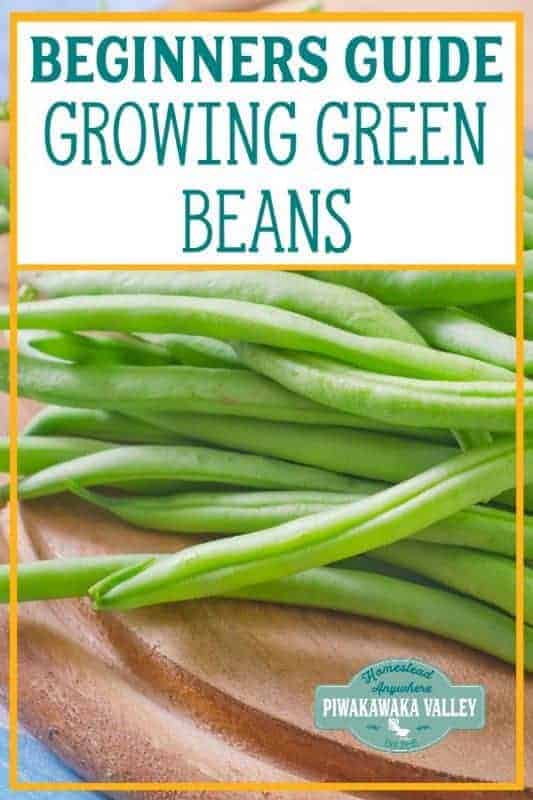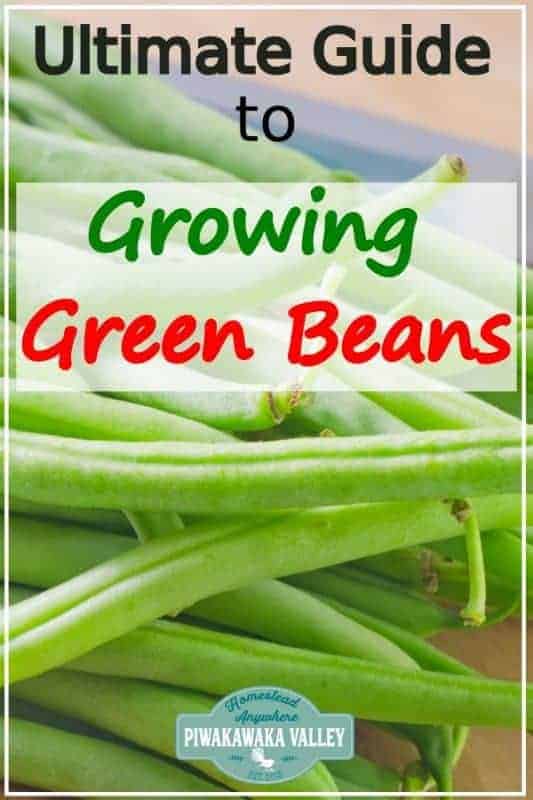This post was most recently updated on April 7th, 2020
Beans are something that it took me a long time to get success at growing. I honestly think that your climate and time of year that you sow them has the biggest impact on your success when you are growing beans in your vegetable garden.
Please read: This information is provided for educational purposes only and is not intended to treat, diagnose or prevent any disease. We encourage you to make your own health care decisions in partnership with a qualified health care professional.
This post contains affiliate links, this means at no extra cost to you, we make a commission from sales. Please read our Disclosure Statement
There are two main types of bean that we will be looking at in this post, both are considered green beans – the runner bean and the french bean.
There is a difference between these two types that we will go through below:
Tips for growing beans: Growing Runner Beans
Runner beans are better to grow in colder climates, and can be treated as a perennial in most areas.
A well established runner bean plant can provide up to three times as many beans as a bush bean variety.
Each plan of a runner bean can supply 1kg/2lb of beans!
You can grow runner beans from seed, and after the first season, allow the plant to die back, but leave the root in the ground.
This will naturally start growing again in the coming Spring, beating the grown-from-seed varieties by several weeks.
Generally it is best to replace your runner bean plants every 3-5 years to keep them vigorous and productive.
RELATED: 20 plants to attract beneficial insects
Runner Bean Varieties
There aren’t many varieties of runner beans, but whichever you choose, some well prepped soil will give you the best chance of success.
Scarlet Runner
This is the best known variety of runner bean, it has bright vibrant red flowers and long green, firm pods of beans that can be eaten immature as a green bean, or left to mature and used as a dried bean.
Stringless Scarlet Runner
If you can find it, this variety is worth growing and keeping. It has less of a tendency to form the tough bean strings.
Purple King
With purple stems and pretty violet flowers, this is a beautiful plant that has lovely purple beans.
Neekar Golden Runner
Not as vigorous or productive as the other 3 varieties, and it isn’t quite as cold tolerant, but the pretty cream colour adds lovely variety to your bean dish.
RELATED: How to grow the best peas
How to grow runner beans
Start your seeds in potting mix in cell trays, with the seeds planted about 1 inch deep in the soil. Keep moist and warm until sprouted.
Once they are up water the plants regularly, and keep in bright light and allow the plants to get well established before planting out in to a well dug plot with some well rotten compost added.
Wait to plant out until you are sure your frosts have all passed.
Runner beans grow tall and grow fast. Provide a climbing frame, netting, strings hanging from a horizontal pole, or stakes. Beans prefer wood or metal over plastic.
Beans will start to form as the plant flowers, pick the beans when they are 15cm/5inches long.
RELATED POST: Growing from seed
Tips for growing beans: Growing French Beans
French beans are also called green beans or snap beans. They come in both climbing (pole) or bush/dwarf.
Tender and sweet, French beans need a warmer climate to grow successfully.
French beans are not actually named after the country, but because they are the beans that French cooks prefer to use.
Dwarf/bush beans crop faster than climbers, but their overall harvest season is shorter.
Climbing French beans crop over a longer season and can produce up to three times as much than dwarf beans.
French beans are annuals and must be planted fresh each year. You can allow some of the last pods to grow to maturity, and dry them and keep the seeds for the following year.
Grow French beans as you would the runner beans. You can get seeds here.
10 Tips for Growing Beans for Beginners
1 Pick a sunny spot
Beans need plenty of sun, and shelter from the prevailing wind to grow well.
RELATED POST: USDA zones, what to plant when
2 Prep your soil well
Beans need deeply, well-dug soil that drains well. Enrich the soil with well rotted compost or horse manure and fork it in well before sowing.
3 Start seeds inside
Starting in early Spring, sow your seeds in peat pots to avoid transplant shock. Plant your beans out when all risk of frost has passed.
Later in the season, you can sow your seeds directly in to the soil for an extended harvest.
4 Don’t soak the seeds
Unlike some seeds, soaking bean seeds before sowing is a bad idea as it increases the chances of the seeds rotting.
5 Don’t over crowd
When planting out your beans, or direct sowing, place the seeds/plants 10-15cm (4 – 6 inches ) apart.
6 Pick them tender
If you plant to eat the beans as green beans, you need to pick them when the pods are 10-15cm (4-6 inches) long. Once the pods become lumpy with developing beans the outside will become tough.
7 Clean the vines
Keep all the old pods removed, even if you don’t want to eat them as it encourages more flowers and more beans.
8 Use a knife
When picking beans snip them with a knife or scissors off of the vine to avoid damaging the stem.
RELATED POST: How to grow a garden from scratch
9 Storage
For the best flavour, pick the beans just before cooking/eating. You can store them in a sealed container or jar for 2-3 days in the fridge, or can or freeze them as you go. If you are freezing them, you will need to blanch them first.
10 Cooking
Simply rinse the beans and snip the ends off, removing any of the long strings with a sharp paring knife. Steam them for 5-10 minutes until just aldente and serve with salt, fresh black pepper and lashings of butter.
Beans also pair well with basil, chives, tarragon, savoury, parsley, fried bacon, feta cheese, mushrooms, tomatoes, garlic, carrots, peppers, beetroots and/or chilli.
If you would like help getting the most out of your garden, I would love to help you, find out more here
RELATED: Free Gardening Resources
If you like tips on frugal living, self sufficiency and consuming less, sign up to our newsletter below, I would LOVE to have you
For further reading, I also recommend all of these books. I own every one of them and they are amazing resources!





























